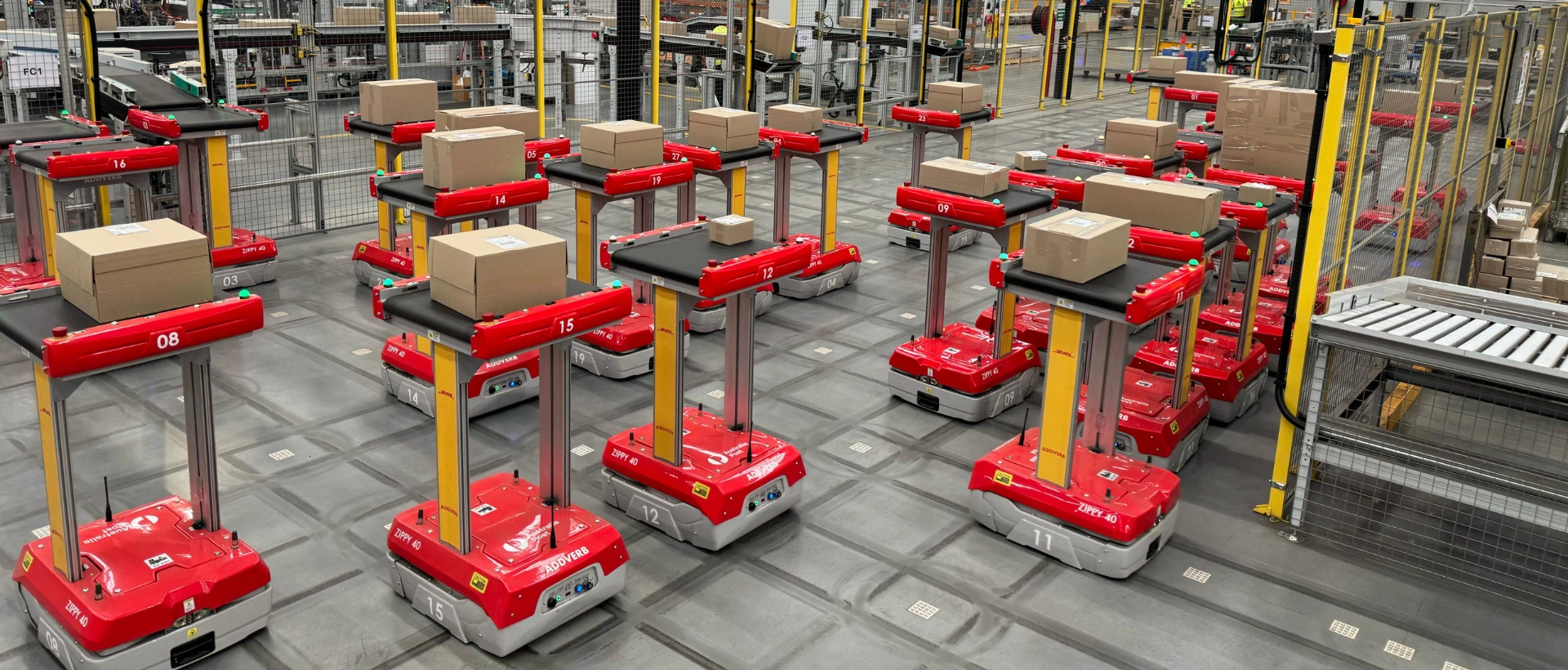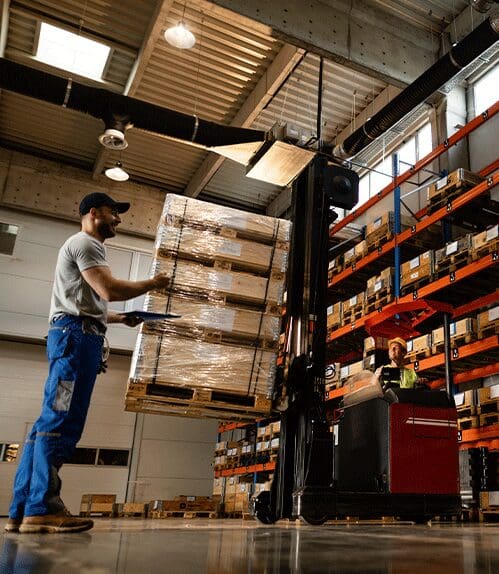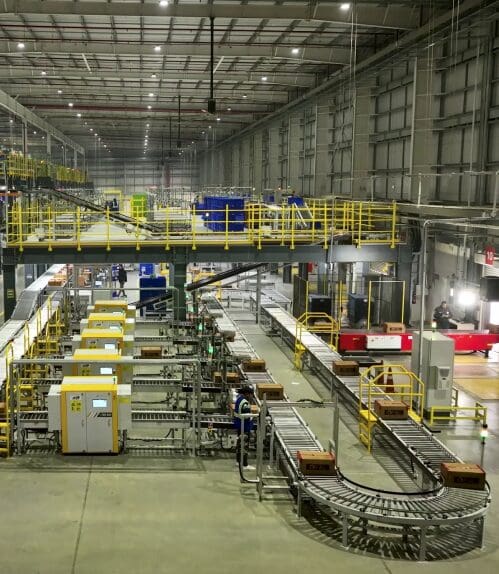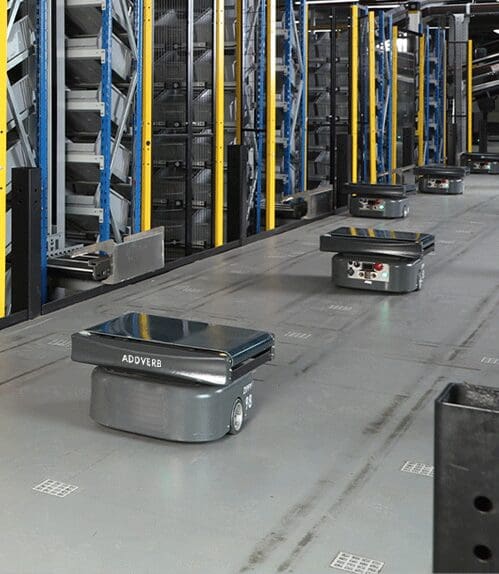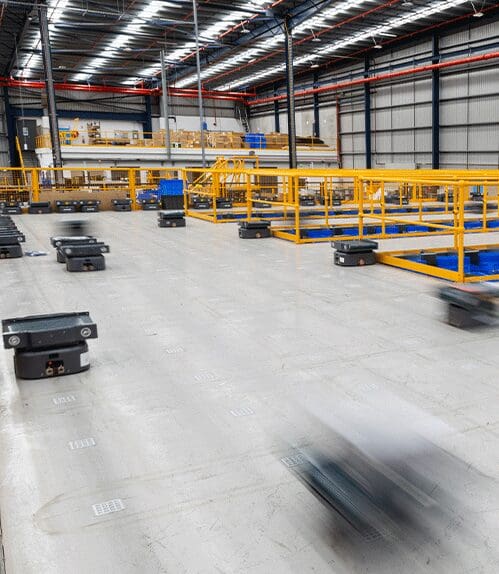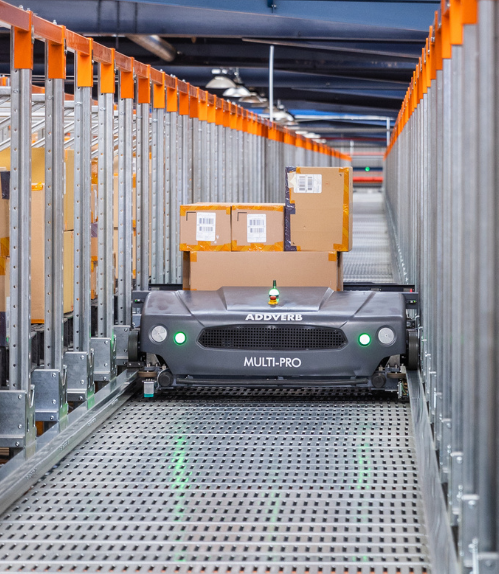Table of Contents
Step into any modern warehouse of the U.S. and you’ll likely see robots handling all the key tasks. Warehouses first adopted automation to address labor shortages, and now it has become the standard. Companies aren’t debating if they should automate, but how soon.
SPER Market Research estimates that the U.S. Warehouse Robotics Market will reach USD 19.52 billion by 2033 with a CAGR of 11.83%.
Warehouses are opting for advanced robotics and intelligent systems owing to the growing need for precision and speed for every crucial task. Right from inventory management to order fulfillment, these automation systems not only reduce dependency on manual labor but also boost productivity and enhance safety on the warehouse floor.
Despite the expenses that come with adopting these automation systems, their long-term perks and efficiency continue to attract businesses. The U.S. warehouse robotics market reflects this growing demand, with increasing adoption across sectors driven by the need for speed, accuracy, and scalability.
Factors Behind the Tremendous Growth of Warehouse Robotics Market in the U.S.
E-commerce Boom
The rising demand and growth of e-commerce have put immense pressure on warehouses to process orders with enhanced speed and efficiency, so much so that 74% are willing to pay more for same-day service.That’s one of the big reasons warehouses have started leaning more on automation. Instead of relying on labor for everything, many businesses are now using robots to deal with tasks like keeping track of stock, picking items, sorting, packing boxes, etc.
Increased Speed & Storage Space
With robots, warehouses can stack items higher and move around more easily, which helps save space and keeps things organized. Research suggest that automation can elevate operational capacity by up to 53% during crunch periods when demand spikes while reducing stockouts and enhancing inventory turnover by 25%. These capabilities support higher throughput with fewer errors, creating leaner and more productive facilities.
Labor Scarcity
While warehouse jobs in the U.S. have grown by over 20% since 2017, there remains a gap between demand and available workforce. Robotics offers a viable solution, ensuring uninterrupted operations by effortlessly handling physically taxing and repetitive tasks.
Rising Labor Wages
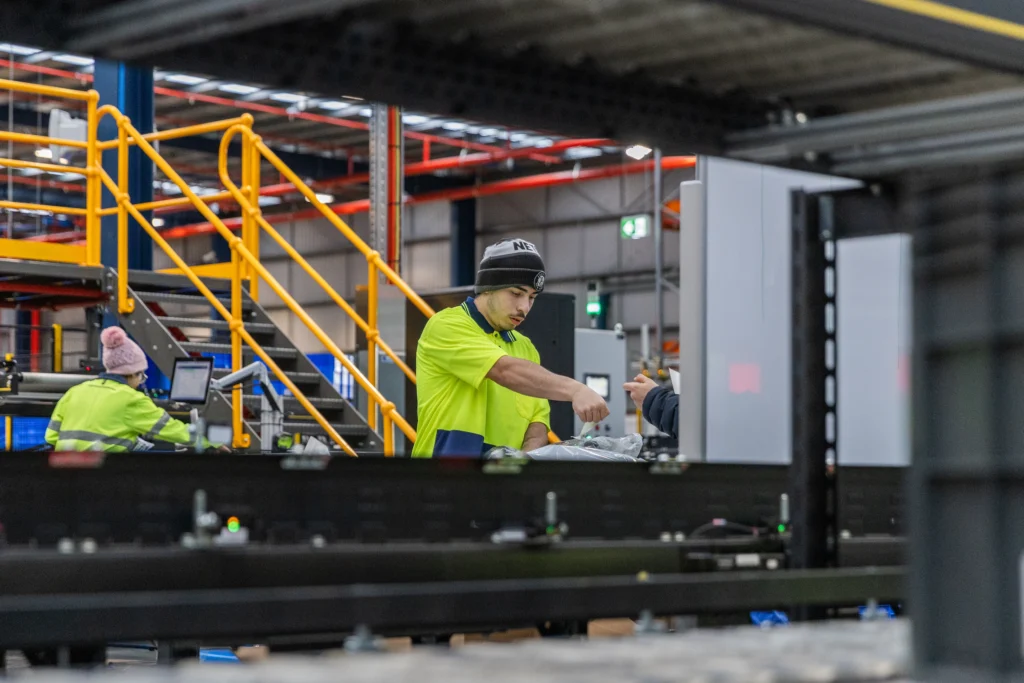
Continuous increase in labor wages and employee benefits have made manual labor more expensive. Robots, on the other hand, require initial investment and prove to be much more cost-effective in the long run without needing constant expense. Data suggests businesses can diminish labor costs by 20–30% while avoiding the recurring expenditure of training and turnover.
Continuous Advancements in Robotics and AI
Modern robots utilize AI, machine learning, and many other smart technologies for real-time decision making and predictive maintenance of the warehouse. These innovative tools help the team avoid human errors and boost productivity, making robotics a much smarter and preferred choice for warehouse operations. Over 30% of businesses have already reported improved throughput with robotics, emphasizing its growing preference as a strategic asset.
Key Functions & Industry Applications of Warehouse Robotics
Warehouse robotics plays a key role in a variety of tasks. Here are a few core functions that these robots perform.
Picking & Packing of Goods
In busy warehouses dealing with a large storage of stock, robots now handle every crucial detail that goes into picking and packing, and that too with surprising speed and accuracy. They help ensure reduced human error and also speed up delivery times, something every customer craves and appreciates.
Smooth Inventory Management
Warehouses no longer depend on manual stock checks. Smart Softwares keep an eye on inventory in real time, updating systems as products come and go. It’s a smart way to avoid running out of items that are in demand or over-ordering the ones that aren’t making much of a sale.
Material Movement Across the Floor
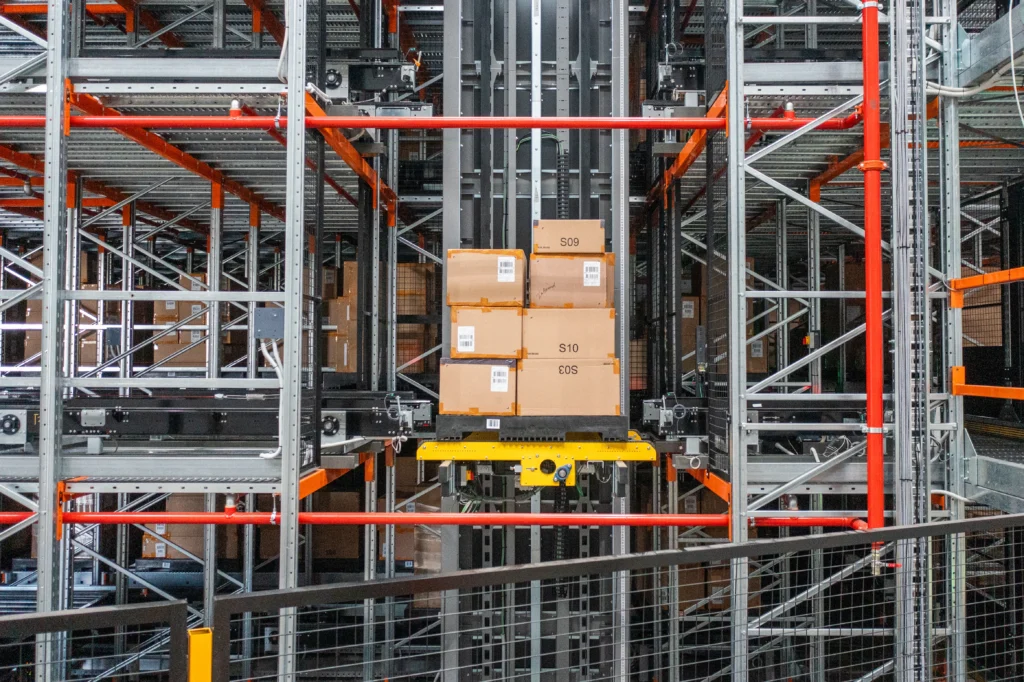
Moving items from one end of a warehouse to another isn’t just exhausting, but it takes a lot of crucial time that can be spent on taking care of other essential tasks. Autonomous mobile robots now take over this task, freeing up workers for jobs that require a human touch.
Convenient Sorting
Whether it’s by size, type, or destination, robots can sort items with ease and without taking as much time as humans. This is especially helpful in warehouses with thousands of products being transported daily.
Storage & Retrieval
Robots also ensure the best use of storage space by stacking and retrieving items from spots that humans find too high or difficult to access. It’s efficient, especially when floor space is limited.
Industry Applications
The following list shows the major areas of the industry where warehouse robotics market is making an impact.
Retail & E-Commerce
More and more retailers and e-commerce giants are opting for robotics with fast-changing inventories and sky-high customer expectations. Automation helps them handle seasonal demand spikes and manage a wide range of products more efficiently. It also makes it easier to keep track of stock in real time and deliver a smoother, more reliable shopping experience to customers.
Third-Party Logistics (3PL)
3PL companies have started relying heavily on automation to meet their rigid deadlines and large shipments. These businesses use robotics to speed up processing times and reduce operational costs while managing diverse SKUs for multiple industries under one roof.
Food, Grocery & Cold Storage
In this sector, companies utilize robots to maintain high standards of hygiene and to handle fragile and perishable items with efficiency. Whether it’s handling frozen items or fresh produce, robots strictly adhere to safety regulations and also improve handling speed. They also make sure to minimize spoilage and contamination risks.
Pharmaceuticals
In pharmaceutical companies, both precision and traceability are critical factors. Robots work to smoothen inventory tracking, expiry management, and effortless compliance with regulations. Their job is to make sure that products move swiftly and safely through the supply chain.
Automotive
Heavy, bulky parts and short-term inventory requirements make warehouse robotics a perfect choice for the automotive sector. From picking engine components to moving large pallets, automation increases efficiency, reduces pressure on human labor, and keeps production lines running smoothly.
Real-World Example: Wooster Brush Company
Based in the U.S., the Wooster Brush Company perfectly demonstrates a business that has reaped the benefits of warehouse robotics. The company partnered with Addverb to automate its material handling processes, thereby improving efficiency and accuracy.
In the scheme of operations, 13 Autonomous Mobile Robots (AMRs) were introduced into their warehouse. These robots, each able to move loads of over 1,100 pounds, have taken over much of the material movement in the facility, from raw goods to finished products. Since their introduction, errors caused by manual handling have dropped, orders are going out the door faster, and staff are spending more time on important tasks like quality checks instead of repetitive lifting.
Wooster was able to achieve quite a few key performance improvements. They now dispatch up to 15,000 cases per day using AMRs and have reached a throughput of over 100 pallet orders daily. The overall system has doubled the warehouse’s handling capacity compared to manual processes.
Robotics and smart fleet management have given results even better than were expected, with fewer mistakes, faster operations, and happier customers. Their success story really shows how impactful robotics can be for modern manufacturing across the U.S.
Leading Regions in Warehouse Robots
Here are the hotspots of the U.S. that are leading in the adoption of the automation system in warehouses.
California
California is a major leader in warehouse robotics, being home to tech hubs like Silicon Valley. The likes of Amazon, Google, and Tesla rely on robotics to manage logistics and smoothly handle operations. Their drive for faster delivery times and enhanced accuracy makes automation a necessity for businesses in today’s time.
Texas
Large companies based in Texas have increasingly been leaning towards robotics to manage their growing operations. The state’s central location and vast land availability make it an ideal option for large distribution centers. The strong logistics infrastructure offered by Texas makes it easier for businesses to adopt robotic systems across their warehouses.
Illinois
Many refer to Chicago as the key hub of logistics, connecting rail, air, and road networks. The warehouses of the region use robots to handle everyday essential tasks, ranging from sorting to packaging.
Georgia
Atlanta is quickly becoming a hotspot for robotics startups, thanks to its high warehouse density and excellent transportation access. Skilled workforce and supportive tech policies of the city make it an ideal place for businesses to succeed in automation.
Ohio
Ohio is a key player in Midwest distribution, owing to its strategic location and presence of major fulfillment centers. As e-commerce continues to rise, companies in the state are increasingly turning to robotics to streamline their operations and cut down on labor costs.
Trends to Look Out For
AI Robotics
Engineers now embed artificial intelligence into many warehouse robots, helping them do much more than just follow preset instructions. With AI, they can analyze situations in real time, adjust to unexpected changes, and handle tasks that once needed human supervision.
Cloud-Based Management
Warehouse managers now rely on cloud tools to streamline operations. They pull together inventory data, order status, and tracking info in one place, making it easier to spot issues early and respond quickly, without relying on outdated systems or guesswork.
Human-Robot Collaboration
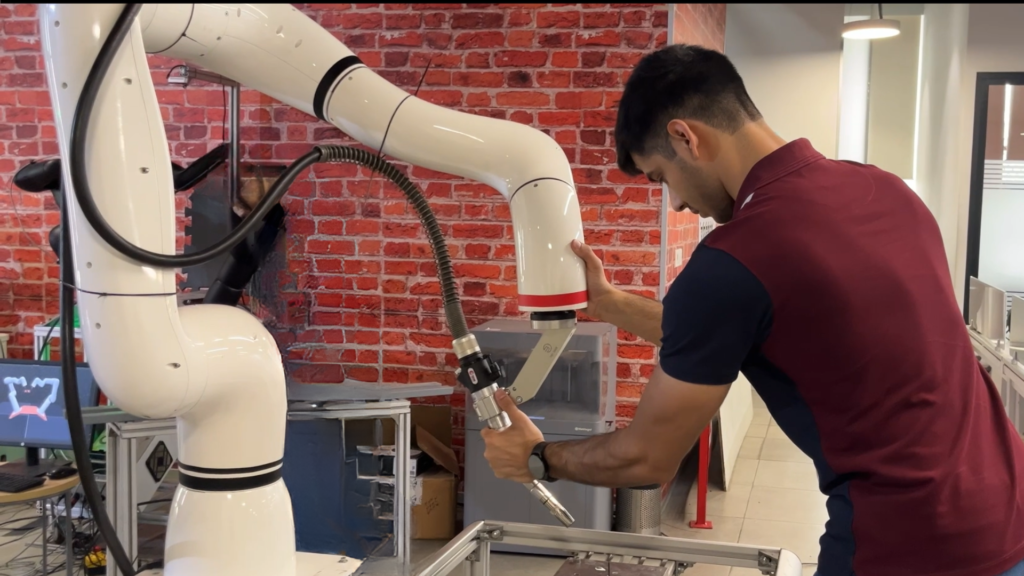
If not completely automated, the majority of warehouses are opting for robots that work alongside human labor. Cobots are one such type that is making the handling of operations smoother while reducing human injuries on the floor.
Reverse Logistics Automation
With product return rates soaring, especially in e-commerce, businesses now consider reverse logistics automation critical. Smart sortation systems, automated picking, and real-time tracking solutions now streamline the return journey, cutting labor costs, minimizing errors, and speeding up the entire process.
Green Automation
Warehouses are starting to think green. Energy-efficient robots and eco-conscious tech aren’t just good for the planet; they also help reduce long-term costs and support broader sustainability goals without compromising performance. Many companies, including major names like Pepsi, HUL, and Panasonic, are blending innovation with sustainable practices to build a more balanced and environmentally conscious value chain.
Conclusion
With evolving warehouse robotic market and increasing trends in the industry, businesses must adapt to stay competitive. Leading regions of the U.S. and other countries already lead the charge by adopting these intelligent systems that focus on enhanced speed, precision, and efficiency.
Partnering with the right organization can ease the process of automation for any business. Addverb promises to offer advanced robotics solutions tailored to the unique needs of your business. Whether you’re looking into starting your automation journey or are planning on scaling your existing systems, Addverb has the tools and expertise required to make your warehouse future-ready.

